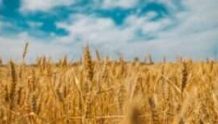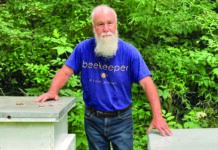Released: July 28, 2020
**This news release from K-State Research and Extension is posted online at www.ksre.k-state.edu/news/stories/2020/07/cattle-chat-summer-pneumonia.html
K-State vets: Watch for summer respiratory condition in calves
Experts discuss risk factors and treatment options for pre-weaning pneumonia
MANHATTAN, Kan. — When talking to ranchers about cattle health concerns in the summer, fly control and pinkeye will often come to mind, but one condition that can lead to calf death is pre-weaning pneumonia.
“Research has shown that pre-weaning calf pneumonia appears in about 20% of the herds in the country annually,” said Brad White, K-State veterinarian and director of the Beef Cattle Institute. “Of that 20%, there is a group that experience significant problems.”
White and veterinary colleague Bob Larson discussed their role in the study and the results during a recent Cattle Chat podcast.
“This pneumonia peaks when the calf is about four and a half months old, so for spring born calves we typically see the condition appearing in July and August,” White said.
Larson said that often pre-weaning pneumonia appears first in some of the bigger, stronger calves in the pasture.
White explained that the larger calves tend to be the older calves, and the natural immunity that they got from their dam’s colostrum at birth is starting to fade.
Larson added that some cattle ranchers aren’t watching for this condition because cattle out on pasture don’t display the typical risk for factors for respiratory disease, such as comingling with new animals in confinement.
“This respiratory disease is surprising because it seems to show up sporadically. Some herds go years between outbreaks and other herds have it happen in consecutive years,” Larson said.
White noted that the study alerted the scientists to some factors for increased risk.
“Along with the time of year, calves grouped together tended to spread the sickness,” White said. As an example, White cited, management practices that involve creep feeding or intensive grazing often lead to calves gathering in tighter spaces.
“Also, calves don’t naturally socially distance, but rather group themselves together in the pasture,” White said.
A pneumonia prevention plan may include avoiding management that forces calves to group closely together and a vaccination prevention protocol, they said.
“Work with your veterinarian and extension specialist to see what the right vaccine prevention protocol is for your area,” White said. “It may mean vaccinating the calves when you work them at 60-70 days of age to give them an extra boost of protection.”
To hear the full discussion on pre-weaning pneumonia, listen in to the BCI Cattle Chat podcast online.
FOR PRINT PUBLICATIONS: Links used in this story
Beef Cattle Institute podcast, https://ksubci.org/media/podcast-2
K‑State Research and Extension is a short name for the Kansas State University Agricultural Experiment Station and Cooperative Extension Service, a program designed to generate and distribute useful knowledge for the well‑being of Kansans. Supported by county, state, federal and private funds, the program has county extension offices, experiment fields, area extension offices and regional research centers statewide. Its headquarters is on the K‑State campus in Manhattan. For more information, visit www.ksre.ksu.edu. K-State Research and Extension is an equal opportunity provider and employer.
Story by:
Lisa Moser
785-532-2010
More information:
Bob Larson
785-564-7457
Brad White
785-564-7463




